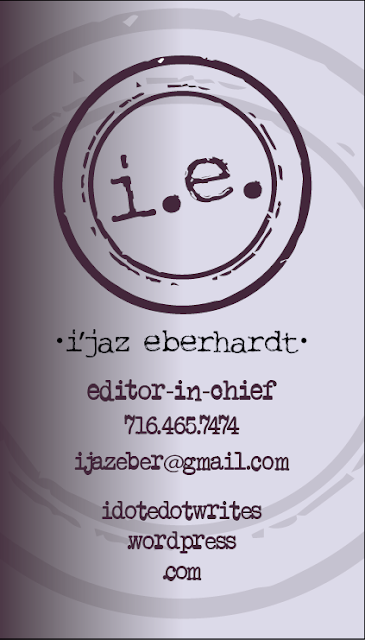The greatest thing one can own in this world is their own
identity, which is why an individual must be mindful of how they present their
self to the world, both as a person and as a brand.
Creating a personal postcard is an essential exercise in
design communication because it serves as a person’s introduction to the world.
Not only are the written statements necessary and reflective of one’s identity,
but the design elements are as well; every detail, from color to space and shapes
reveal a person’s qualities and personality traits.
For example, this postcard takes two of the most prominent
colors from the photograph – gray, being the most occurring and red, being the
boldest—and builds a theme around them, using the eyedrop tool to match the
background with the color of the lipstick and creating a “frame” of pyrite that had blended
shades of gray to mimic the texture and pattern of the shirt. Red communicates strength
and leadership, qualities that are positive to be associated with
professionally. However, care was taken as not to make the background too bold of a
red so that it would not be aggressive, off-putting or distracting. Gray, on
the other hand, is a neutral and agreeable color that balances out the red,
creating a harmony that communicates an ability to both lead and follow when necessary.
In metaphysics, pyrite has properties of manifestation and harmony, reflective of the postcard's visual theme as well as personal aspirations.
Two fonts were used for the postcard: Amador for the name and Viner
Hand ITC for the body copy. Amador as the header is reminiscent of fonts used for popular publications like The New York Times, The Washington
Post and Los Angeles Times. This font brings to mind those of some of the most successful American
print news publications.
Viner Hand ITC looks like handwritten
text and was paired with an illustration of a quill pen so that it would look
as if the words were written. Handwritten text, even when computer-generated,
can add a personal touch, making the words appear more readily accessible and
relatable.
The design hierarchy is simple, yet exciting and personally
reflective. This was a successful hierarchy because the background mixed
with framing allows the photograph to stand out. By placing the silhouetted image directly in the
center of the page and creating text wraps on both sides, two sides are represented: a professional and an average person with
interests and hobbies. Furthermore, the use of straight edges for the outsides
of the sectioned texts keeps all of the words contained and neat. The use of
only two graphics – pen and inkwell –conveys the image of a
writer without overcrowding the page with too many images. The postcard has just the right
amount of white space to create a comfortable distance between graphics and
text.
The empty spaces are actually what add to the functionality
of the design. There is enough space between objects and text so that each
element clearly and distinctly serves its purpose, but the proximity between
elements are close enough so that nothing appears isolated.
Using the Adobe applications Photoshop, Illustrator and InDesign
were necessary for creating this postcard because each application has different
uses and when the three are used in conjunction with one another, each created
element combines to create a thoroughly designed and effectively communicative
product.
In Photoshop, creating a clipping path for an image allows
for easy transportation for a desired element and preservation of the original
image and background if needed. Photoshop also allows effects for images to create
a customized and unique project.
Illustrator is essential for creating illustrations because
of the tools that allow construction and transportation with ease. Illustrator arguably
allows for the most personal touches because one can actually design graphics
from scratch with applications like the pen tool.
InDesign is most essential in creating a project because it is
where all elements come together. In illustrator, organization, arrangements
and finishing touches are implemented. A project in InDesign also reflects the
creator because it is all elements in one, as all of the elements incorporated
in my postcard reflect my many layers as a person.
Having an understanding of the differences and effectiveness
of each application can be extremely useful in creating works that speak volumes
about the insight, expertise and individuality of their creator.












